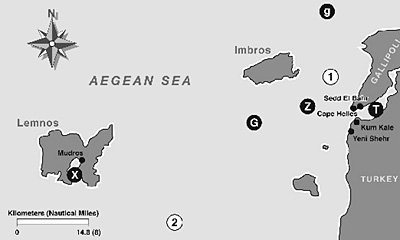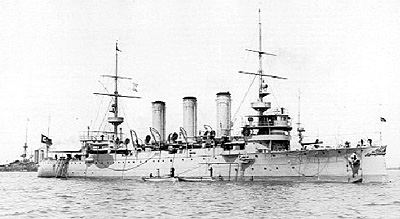 The First Balkan War was started by an
alliance made up of Bulgaria, Greece, Serbia,
and Montenegro. This Alliance pretended
that cause of the war was the desire to
liberate their kinsmen and as a response to
the repressive policies of the Young Turks
(Ottoman Empire) . The Balkan League
agreed to take the offensive.
The First Balkan War was started by an
alliance made up of Bulgaria, Greece, Serbia,
and Montenegro. This Alliance pretended
that cause of the war was the desire to
liberate their kinsmen and as a response to
the repressive policies of the Young Turks
(Ottoman Empire) . The Balkan League
agreed to take the offensive.
On October 8, 1912, Montenegro declared war against the Turks, and ten days later their allies entered the war. Within a few weeks, Turkey had been pushed back to Istanbul (then named Constantinople in some sources) and the Gallipoli peninsula, Albania, Epirus, Macedonia and Thrace were conquered by the Balkan States.
While fighting took place at Adrianople, Scutari, and Janina, an armistice was signed, and a peace conference met at London in December, 1912. The negotiations broke down when a coup d ’etat occurred at Istanbul which brought into power a group of men who were determined to continue the war. Adrianople, Scutari and Janina fell in the spring of 1913 and the fighting ended. The Treaty of London ended the First Balkan War on May 30, 1913.
The Treaty was followed by a quarrel over the booty which caused the Second Balkan War. It started when Serbia, Greece, and Romania quarreled with Bulgaria over the division of their joint conquests in Macedonia.
On June 1, 1913, Serbia and Greece formed an alliance against Bulgaria, and the war began on the night of June 29/30, 1913. The Bulgarians were quickly defeated and a peace treaty was signed on August 10, 1913.
Under the terms of the treaty, Greece and Serbia divided up most of Macedonia between themselves, leaving Bulgaria with only a small part of the region. The pretended cause of war, the liberation of the kinsmen of the Balkan states, was completely forgotten. Each party grabbed as much territory as possible without regards to ethnic boundaries.
As a result of the Balkan Wars, Greece gained southern Macedonia as well as the island of Crete and some of the Aegean Islands. Serbia gained the Kosovo region and expanded into northern and central Macedonia. Albania was made an independent state under a German prince.
The political consequences of the wars were considerable. Bulgaria, feeling cheated by it ’s former allies and looked to Austria for support, while Serbia, which had been forced by Austria to give up its Albanian conquests, regarded Vienna with hostility, thus setting the stage for WW I.
Naval Strategy
Greek dominance of the sea with a smaller fleet than their Turkish enemy was a key factor for the Alliance victory. The Greek Navy prevented the Turks from reaching the Adriatic Sea to reinforce the European front with forces from Asia. These forces had to move by land, and came either too late or in too small sections. The Alliance forces could attain numerical superiority on the European front against the more numerous Turkish army which was locked away in Asia.
The Ottoman navy was mainly used in the Black Sea as support for the land forces, fighting the Bulgarian advance against Istanbul. In December, when the Bulgarian advance slowed down, the Turkish navy showed up near the mouth of the Dardanelles.
The Greeks also used their navy to invade numerous Aegean islands. Lemnos was captured on 21 October 1912, Thasos and Strati 31 October, Samothrace 1 November, Psara 4 November, Chalkidie 4-6 November, Icaria 17 November, Mytilene 21 November and Chios 24 November.
 Turkish cruiser Hamidije
Turkish cruiser Hamidije
This helped the Greeks to blockade the Dardanelles. Balkan League trade, troop transports like the movement of large numbers of Bulgarian and Serbian forces from Salonika to the Chatalja front, or amphibious operations went on unmolested by Turkish ships.
Starting with December 1912 the Ottoman navy probed the Greek blockade several times. Twice the adversaries clashed, in the battle of Cape Helles on 16 December 1912 (marked with a 1 on the map) , and in the battle of Lemnos on 18 January 1913 (marked with a 2 on the map) . In both cases the Turkish forces retired into the Dardanelles.
The only Ottoman success was the raid of the cruiser Hamidieh . She slipped through the Greek blockade on 14 January 1913, bombarded the port of Syra, sank Macedonia, a Greek auxiliary, struck at a group of Alliance transports and finally, due to lack of coal, took refuge in the Suez Canal.
A historical ‘First ’ was achieved by the Greek submarine Delfin . Off the mouth of the Dardanelles, on 6 December 1912, it approached the Turkish cruiser Medjidije despite the escort of 5 destroyers. At a range of 500 meters, it launched a single torpedo and missed. This was the first time a warship at sea was attacked by a submarine using a self-propelled torpedo.
In the second Balkan war, the navies of the belligerents were not involved.
Bibliography
Fock, Harald. Schwarze Gesellen, Zerstörer bis 1914. Koehler, 1981
Koop, Gerhard/Schmolke, Klaus-Peter. Die Linienschiffe der Brandenburg bis Deutschland Klasse. Bernard &Graefe, 2001
Nottelmann, Dirk, Die Brandenburg Klasse. Mittler, 2002
Potter, E. B. Nimitz. Ch. W.
Rohwer, J. Seemacht, von der Antike bis zur Gegenwart. Pawlak, 1982
Graf Reventlow. Die Deutsche Flotte. Fr. Lehmann’s, 1901
The First Balkan War (1912-13) FG&DN Scenario
- Historical Overview
Battle of Cape Helles Scenario
The Battle of Lemnos Scenario
Annex A: Ships of the Balkan Wars
BT
Back to The Naval Sitrep # 27 Table of Contents
Back to Naval Sitrep List of Issues
Back to MagWeb Master Magazine List
& copy Copyright 2004 by Larry Bond and Clash of Arms.
This article appears in MagWeb.com (Magazine Web) on the Internet World Wide Web.
Other military history and related articles are available at http://www.magweb.com